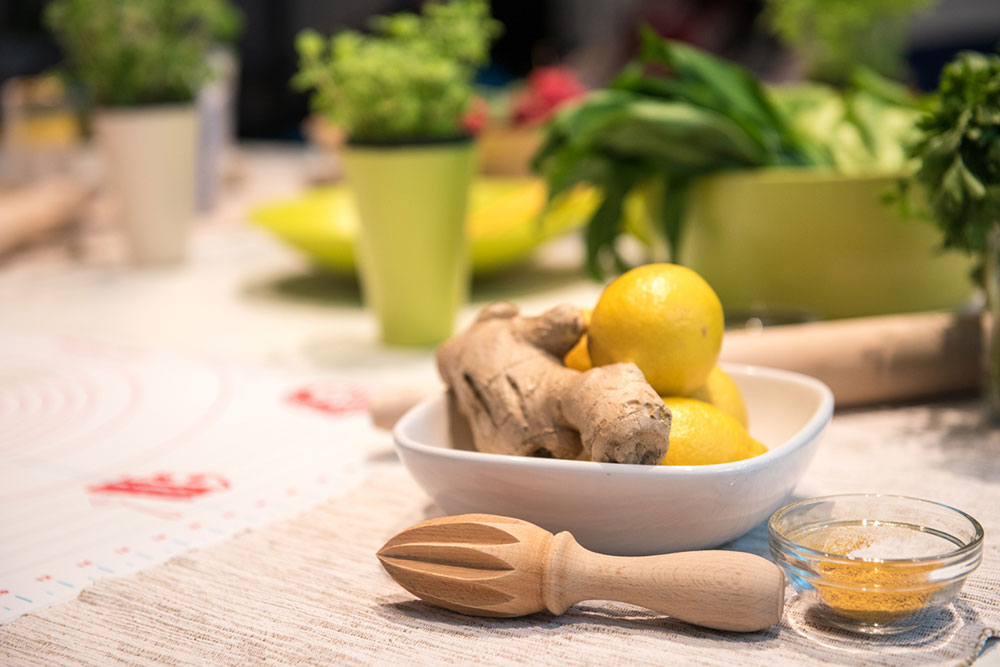10 Home Remedies to Manage Vitiligo
Vitiligo is an autoimmune condition that impacts a person’s skin pigmentation. This disorder causes patches of one’s skin to lose color due to the lack of melanin-producing cells in the area. Although the exact cause is unknown, health experts believe vitiligo is triggered by the immune system attacking and destroying melanocytes—cells that provide color to the skin and hair. Various home and natural remedies, along with nutritional changes, help one manage vitiligo and its symptoms.
1.

Many plants contain a host of chemical components that have multiple health benefits when applied to the skin in the form of organic creams or consumed as food. Aloe vera, one such plant, has long been used for skin health management. Besides strengthening one’s immune system, aloe vera contains vital elements like vitamins A, B12, C, and folic acid. Additionally, organic aloe vera creams provide the skin with essential minerals like chromium, copper, calcium, zinc, and iron. All these elements support the repigmentation of one’s skin.
2. Have foods rich in omega-3 fatty acids
Continued inflammation destroys melanocytes attacked by the immune system. So, one can opt for foods like tuna, cod, mackerel, and salmon, which contain large amounts of omega-3 fatty acids that help manage inflammation. Fatty fish are also packed with antioxidants that prevent internal inflammation, a major cause of skin-based conditions. Some other rich sources of omega-3 fatty acids are herring, mackerel, mussels, anchovies, oysters, sardines, swordfish, and trout. Apart from fatty fish, omega-3 fatty acids are also found in foods like walnuts, chia seeds, flaxseeds, hemp seeds, seaweed (like hijiki, dulse, wakame, nori, or kombu), and plant-based oils such as canola oil.
3. Add carrots and tomatoes to meal plans
Foods like carrots and tomatoes contain a type of carotenoid known as beta-carotene, which contributes to improved skin health. This component helps reduce inflammation in the body, protects one’s skin from pigmentation-related issues, and promotes eye health. Individuals with vitiligo often experience low vitamin A levels, which damage the melanocytes. Beta-carotenes compensate for this deficiency by converting into vitamin A. Besides tomatoes and carrots, other food sources rich in beta-carotene include spinach, lettuce, sweet potatoes, cantaloupe, broccoli, and winter squash.
4. Increase vitamin D intake
A deficiency of vitamin D can worsen autoimmune conditions like vitiligo. So, it is important to replenish vitamin D levels to manage one’s symptoms. Arguably, getting enough sunlight exposure is one of the best and most natural ways to compensate for vitamin D deficiency. Health experts often advise people lacking vitamin D to spend 30 minutes to an hour under the open sun. But, many vitiligo patients tend to be severely sensitive to sunlight. In such cases, health experts advise people to opt for vitamin D-rich sources like raw milk, eggs, mushrooms, cod liver oil, and fatty fish.
5. Intake ginger regularly
A food recognized for its myriad health benefits, ginger helps boost blood circulation and support skin health. All one needs to do is place a piece of ginger on a vitiligo-affected skin patch and let it dry. After a while, the natural pigment production will resume, and the skin color will be restored. One can use this ginger-based remedy two times every day for a week to achieve the best results.
6. Apply coconut oil on the skin
Inflammation is one of the major causes of skin pigmentation-related issues like vitiligo. Applying coconut oil is one of the quickest ways to manage inflammation and get rid of vitiligo. Coconut oil comes with natural soothing and healing properties, which help quickly cure inflammation. Applying this oil to one’s skin helps restore pigmentation. Additionally, the antifungal nature of coconut oil helps address various skin health problems.
7. Apply turmeric paste and mustard oil
Essential fatty acids and vitamins present in mustard oil help nourish skin with their healing properties. Turmeric, on the other hand, contains several antioxidative and anti-inflammatory properties. Together, these properties reduce inflammation and protect one’s skin from oxidative damage. One can facilitate and accelerate repigmentation with the help of a mixture of mustard oil and turmeric on the affected skin patches. Apply it to the affected areas, leave it on for around 20 minutes, and rinse it off with warm water. Repeat this process two times daily for two weeks, and the skin may start showing signs of repigmentation.
8. Eat foods rich in vitamin B12
One of the major signs of vitiligo is a deficiency of vitamin B12 in the body. A lack of this vitamin may also lead to other skin health-related problems, such as hyperpigmentation and angular stomatitis. To manage the impact of this deficiency, one can opt for food items like meat, eggs, and dairy products. Fortified food items such as bread, cereal, nutritional yeast, and plant milk may also help. Vitamin B12 can also assist with repigmentation in individuals with vitiligo. So, one can incorporate foods rich in this vitamin into one’s daily meal plan to manage vitiligo symptoms and heal the skin.
9. Eat whole grains
When addressing a condition like vitiligo, one should avoid processed or refined foods since they contain high amounts of preservatives and chemicals that worsen skin inflammation. Instead, one can replace them with whole grains, which provide as much (if not more) nutritional value as refined grains without causing health issues. Further, they are rich in nutrients and fiber that can reduce oxidative stress and support one’s immune system. Foods to opt for include wholewheat pasta, brown rice, quinoa, and oats.
10. Try yoga and rhythmic breathing
Persistent stress is associated with the development and progression of skin disorders like vitiligo. One can opt for activities like yoga to manage the effects of stress on one’s skin health. Practicing yoga daily helps build a person’s focus and reduces stress. Besides yoga, one can try slow, rhythmic breathing to calm one’s nerves.




